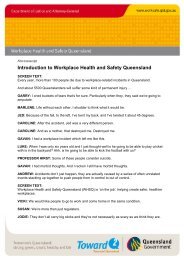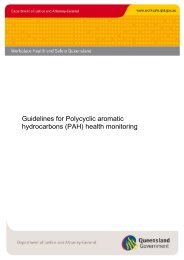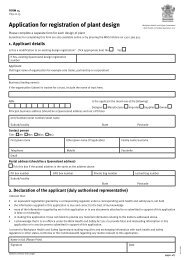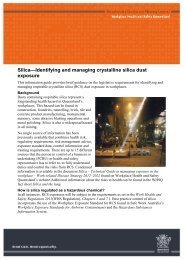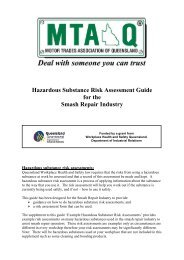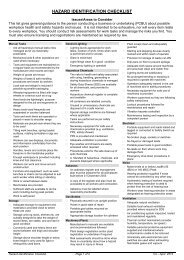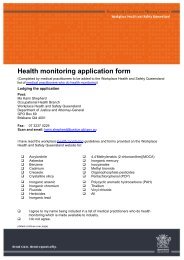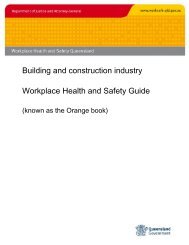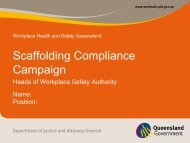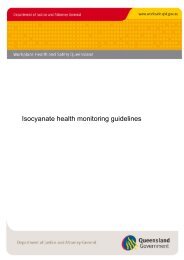A guide to the Dangerous Goods Safety Management Act 2001
A guide to the Dangerous Goods Safety Management Act 2001
A guide to the Dangerous Goods Safety Management Act 2001
Create successful ePaper yourself
Turn your PDF publications into a flip-book with our unique Google optimized e-Paper software.
2<br />
2.0 DEFINITIONS<br />
2.1 Acceptable Level of Risk<br />
An “acceptable level of risk” is considered <strong>to</strong> have been achieved when risk has been<br />
minimised as far as is reasonably practicable.<br />
The likelihood of harm <strong>to</strong> people, property or <strong>the</strong> environment, and <strong>the</strong> severity of that<br />
possible harm, needs <strong>to</strong> be considered when deciding whe<strong>the</strong>r <strong>the</strong> risk is minimised as far<br />
as is reasonably practicable.<br />
Where an acceptable level is not specified or it is not practicable <strong>to</strong> estimate <strong>the</strong> level of<br />
risk, <strong>the</strong> risk assessment should take in<strong>to</strong> account good industry practice and compliance<br />
with recognised standards.<br />
2.2 Acronyms and Abbreviations<br />
To make this document easier <strong>to</strong> read, where possible <strong>the</strong> use of acronyms has been<br />
avoided. However it has been necessary <strong>to</strong> use a few acronyms and abbreviations <strong>to</strong> reduce<br />
<strong>the</strong> size of this document. The following glossary should help:<br />
ADG Code<br />
CHEM Unit<br />
DES<br />
DGL<br />
DGSM <strong>Act</strong><br />
DWHS<br />
F&C<br />
HAZMAT<br />
MHF<br />
MoU<br />
MSDS<br />
2.3 <strong>Dangerous</strong> <strong>Goods</strong><br />
Australian <strong>Dangerous</strong> <strong>Goods</strong> Code<br />
Chemical Hazards and Emergency<br />
<strong>Management</strong> Unit<br />
Department of Emergency Services<br />
<strong>Dangerous</strong> <strong>Goods</strong> Location<br />
<strong>Dangerous</strong> <strong>Goods</strong> <strong>Safety</strong> <strong>Management</strong> (<strong>Act</strong>)<br />
Division of Workplace Health and <strong>Safety</strong><br />
Flammable and Combustible Liquids<br />
Hazardous Materials<br />
Major Hazard Facility<br />
Memorandum of Understanding<br />
Material <strong>Safety</strong> Data Sheets<br />
<strong>Dangerous</strong> goods are chemicals which have <strong>the</strong> potential <strong>to</strong> present an immediate threat <strong>to</strong><br />
people, property or <strong>the</strong> environment if not properly controlled.<br />
They are divided in<strong>to</strong> nine classes, some of which are divided in<strong>to</strong> sub-classes according<br />
<strong>to</strong> <strong>the</strong> nature of <strong>the</strong> hazard. For fur<strong>the</strong>r information, consult <strong>the</strong> Australian <strong>Dangerous</strong><br />
<strong>Goods</strong> Code.<br />
For <strong>the</strong> purposes of <strong>the</strong> <strong>Act</strong>, <strong>the</strong> term ‘dangerous goods’ also includes ‘goods <strong>to</strong>o<br />
dangerous <strong>to</strong> be transported’ under <strong>the</strong> ADG Code.<br />
6





